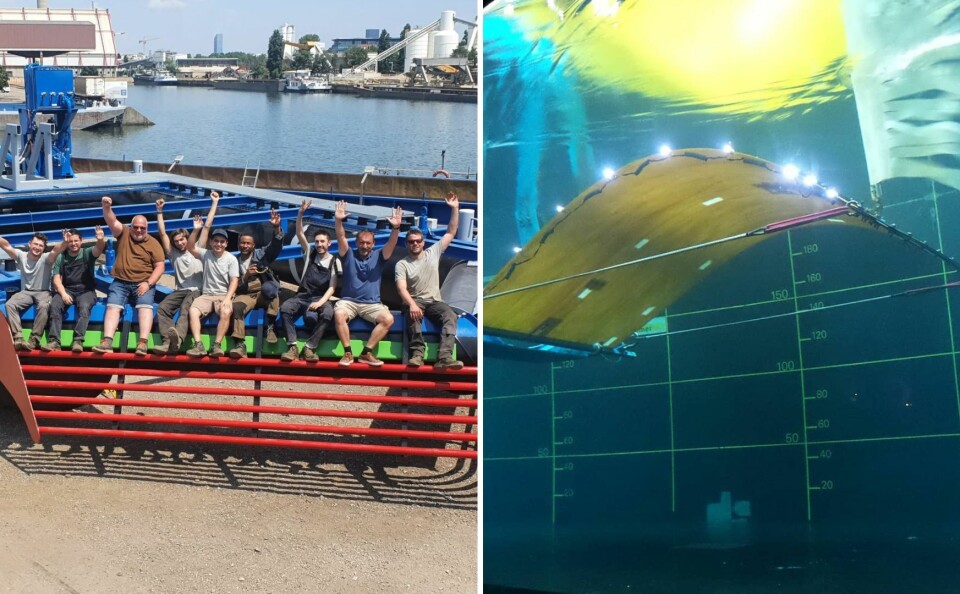-
Electricity bills to remain stable for most homes in France, says government
Significant rises are not forecast for customers on regulated tariffs in next two years
-
What changes in France for residents in November 2025?
EES checks rollout, energy bills, taxes, and winter rules: See what is changing in France next month
-
Dordogne electricity broker claims 8% savings for most clients
Service is free for customers – company earns commission from suppliers
Electricity generator moves like swimming fish in French river trials
The company explains how the device turns a flowing river into green energy

A new form of electricity generation in rivers, using an undulating plastic membrane that mimics the swimming action of fish, is being trialled in the Rhône near Lyon.
Four devices, the brainchild of a firm called EEL Energy, will be used in the trial.
Each is expected to produce 100MWh – enough power for around 25 houses with electric heating, and 100 without.
Read more: Electricity bills in France to rise by 10% from August 1
Motion drives a generator
Franck Sylvain, the company’s CEO, told The Connexion: “It has been a long road but we are at last past the prototype stage and these devices are the same as ones we will be selling.
“We have had a lot of interest from people who say they want to buy, but they’re all waiting to see the results of real-life tests.”
The devices, called biomimetic tidal turbines, consist of a seven-metre by 10-metre membrane immersed at a depth of around five metres.
This is set in motion by the river’s current. Each membrane has a mechanical arm linked to a raft on the surface, where a hydraulic motor is used to drive a generator.
Read more: French village slashes electricity bills by using old watermill site
Rivers have constant flow
“The huge advantage is that rivers have a constant flow, unlike wind, which comes and goes, said Mr Sylvain.
“There are only around five suitable river sites in France, but we hope to use these devices in Britain, Germany and elsewhere in Europe.
“The real potential is in the developing world – along the Congo or Amazon, for example.”
Each device costs €250,000. The company hopes to install and run them in Europe, and to sell them in other parts of the world.
The membrane is 20mm thick and made of a type of plastic used for food packaging, which does not break down in water. It is easily recyclable.
“We do not know how long the membrane will last, but there is no reason not to think it will be for a long time,” said Mr Sylvain.
“Smaller prototypes were in place for two years and were still in excellent condition when examined.”
Company in Scotland tried similar device at sea
The company is also experimenting with placing similar devices in the sea, where they might need to pivot to take advantage of tidal currents.
It has been tried before – a Scottish sea-based undulating electricity device called Pelamis, which was half submerged and used wave power, was tested off Portugal in 2008. However, mechanical parts failed after four months and it was not replaced.
Pelamis tried to develop improved models but did not succeed in selling them, and the firm collapsed in 2015.
Mr Sylvain said the difference with EEL Energy’s product is that it is underwater and has already been shown to be more reliable in early sea trials than Pelamis.
However, the company wants to perfect its river devices before moving into the marine market.
EEL Energy is keen to stress that its turbines have the advantage of producing carbon-free energy, with no impact on the environment.
“It is important that we move away from fossil fuel electricity generation, for all sorts of reasons,” Mr Sylvain said.
“We are confident that our device works, and will be profitable to buy and operate, and that is what our tests in the Rhône will show.”
Related articles
Driving in France: Is it time to switch to an electric car?
Greenpeace France: Tackling climate change is our priority
‘We found balance between joy and frugality living off-grid in France’
























